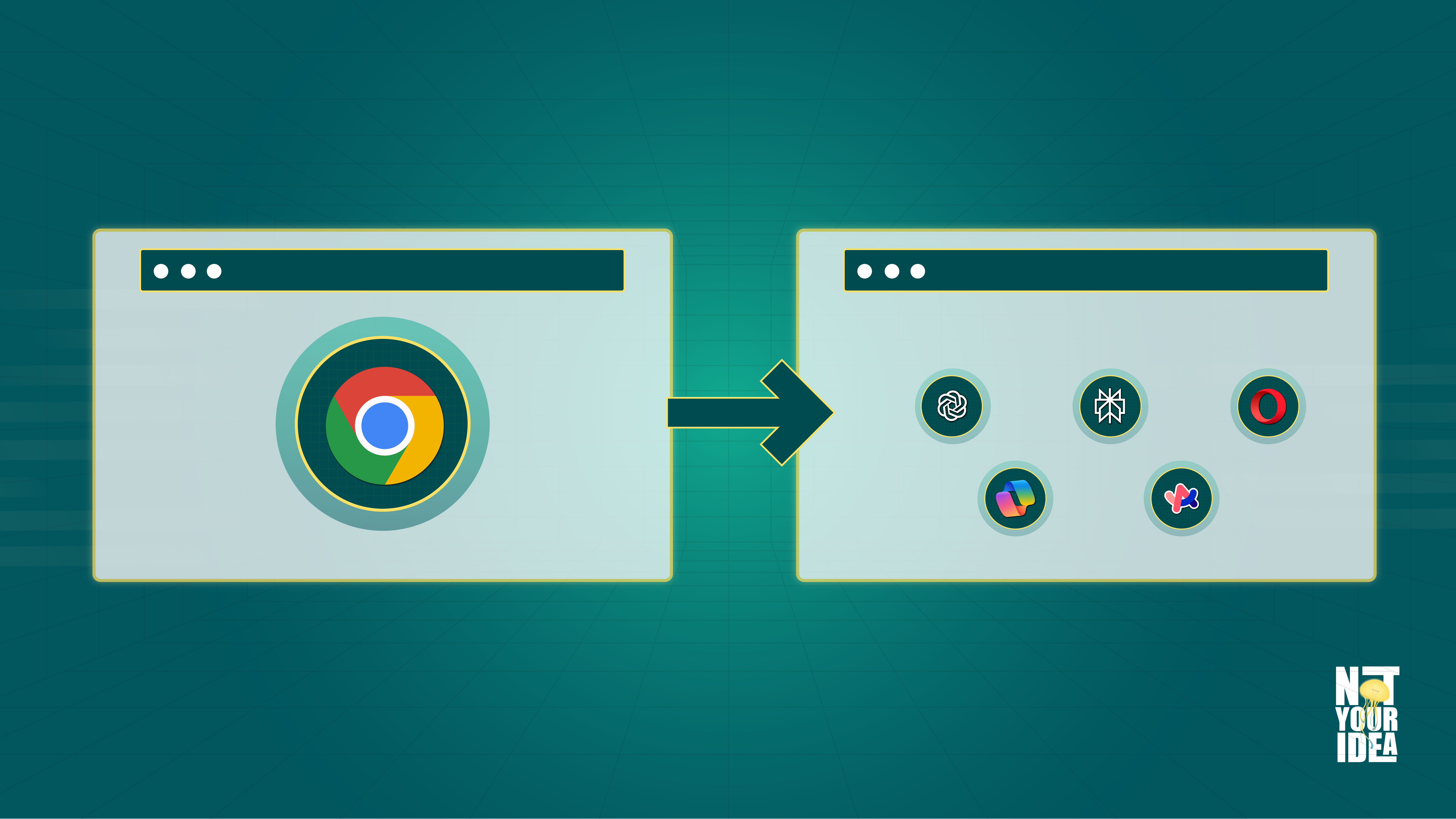Booking a dermatologist visit in under a minute, capturing your insurance card with your phone, and a clear treatment plan reaching your inbox before you even leave the parking lot. Thanks to ongoing digital transformation in healthcare, consumers now expect similarly smooth patient experiences on every healthcare site they visit. Yet many portals still rely on dated screens, isolated records, and paper forms, which leads to confusion, missed visits, and heavier workloads for staff.
This article shows how user-centered design, connected data, and automated updates can turn a clunky portal into a smooth digital front door. Apply these ideas to raise patient satisfaction, streamline operations, and deliver care that feels as effortless as it is effective.
The Digital Shift: What Patients Actually Want
People can order dinner, pay a bill, and book a taxi from their phone before the kettle boils. They now anticipate the same speed and ease when they require care. Patients wish to view real-time available slots, complete forms once, and receive immediate status notifications – without holding on the phone.
A recent survey highlights the gap healthcare must close. 80% of patients report online scheduling as necessary, but only 25% score existing tools as excellent. Nearly half, 48.4%, still encounter hurdles like clunky forms or wait times. That is not a nice-to-have; it is a clear sign that healthcare must meet consumer-grade standards or risk losing patients to providers that do. Delivering on these expectations drives loyalty, reduces friction for staff, and supports better health outcomes for everyone involved.
Innovations That Are Delivering the Difference
So, how does a better patient experience look in action? Let’s break down the innovations making a difference:
Patient Portals
Patient portals have moved from being basic lab result viewers to full-fledged digital hubs. The best patient portals today function as a central command center where patients can access everything from care plans and prescriptions to secure messaging with their care team.
The trick is to make these portals actually be helpful, not merely useful. When patients can handle key tasks online without having to call, they enjoy quick convenience and your team gains valuable breathing room.
Telemedicine Integration
When patients can book and start a secure video visit on the same portal where they check test results and pay bills, you remove the travel, parking, and waiting-room hassles that often delay care. This setup works especially well for follow-ups, medication reviews, mental-health sessions, and specialist consultations that do not require a hands-on exam.
If telemedicine is integrated into your website in a thoughtful and seamless way, everyone wins. It allows clinicians to fill small gaps in their schedules, decreases phone calls to support teams, and gives easier access to care to patients in rural and/or mobility-impaired situations. Also, each virtual visit plugs right into the electronic health record, which keeps continuity and makes next steps very clear. What starts as convenience for patients becomes efficiencies for your clinic, stronger loyalty for your patients, and better overall business outcomes for your organization.
AI-Driven Chatbots
Virtual assistants have come a long way. Today’s AI chatbots can greet visitors, answer insurance questions, guide patients through symptom checklists, and route urgent issues to the right clinician without putting anyone on hold.
Installing a chatbot eases pressure on the front desk because everyday requests such as appointment times, prescription refills, and pre-visit instructions, receive instant replies. Patients enjoy round-the-clock answers, and staff gain time for higher-value conversations. If your bot can link to your electronic health record, it can personalize responses, maintain a user’s archive of questions to ensure continuity, and hand off complex interactions to your human team.
Interactive Symptom Checkers
Online symptom checkers let patients size up their situation before they ever leave the couch. A brief questionnaire walks them through their main concerns, then offers clear guidance on whether self-care, a routine clinic visit, or emergency treatment is the right move.
Providers benefit too. The tool diverts mild cases away from emergency bays, and the questionnaire’s details flow straight into the patient’s record so doctors start the consult with context in hand. Tied to online booking and familiar digital payments, a well-designed symptom checker turns anxious searches into confident, well-directed patient journeys.
Voice Navigation & Secure Messaging
Voice search has shifted from novelty to everyday convenience. By letting patients ask their phone or smart speaker to “book my next check-up” or “show my latest test results,” you remove barriers for seniors, people with limited mobility, and anyone managing a hectic schedule. Hands-free navigation also fits neatly into the smart-home tools many households already use.
Secure two-way messaging keeps the dialogue open once patients connect. They can share updates, clarify instructions, or raise quick questions without waiting for the next visit. Clinicians reply when convenient, offer timely reassurance, and often catch small issues before they escalate. Together, voice navigation and secure messaging build trust, boost treatment adherence, and lighten the load on your front desk.
Digital Payments & Cost Transparency
Show patients a clear cost estimate, complete with real-time insurance details and an EMI calculator that breaks larger bills into manageable instalments. When it is time to pay, UPI, card, and wallet options let them settle the balance in seconds. A personal dashboard stores all receipts and current balances, while automated reminders and instant e-receipts keep finances organized and spare your team from routine collection calls. This transparency creates trust and makes healthcare costs easier for patients to comprehend and budget for.
Real-World Implementation: Avoiding Common Pitfalls
Now for the elephant in the room: implementation is not always smooth sailing. Here are the most typical roadblocks and how to avoid them:
Legacy Systems and EHR Integration: The answer is not to rip and replace all of it. Rather, go for interoperable, API-enabled platforms that can integrate with your current systems while leaving space for future expansion.
Security and Compliance: Involve your compliance and cybersecurity teams in the discussion early. They're not obstacles, but your friends, and they will assist you in creating secure solutions from the start.
Departmental Silos: Implement agile methodology and pilot programs to prove value across departments. When teams see tangible value, resistance usually disappears.
The trick is to begin small, learn quickly, and scale what succeeds. You don't have to change everything at once – incremental gains tend to have the greatest impact.
Measuring Success: KPIs That Actually Matter
You can't fix what you can't measure. The following metrics will let you know if your digital transformation initiative is actually enhancing patient experience:
- Portal usage frequency: Are patients indeed leveraging the instruments you're offering?
- Chatbot conversation success rates: Are patients receiving the assistance they need, or are they becoming frustrated?
- Online scheduling completion rates: How many patients initiate scheduling but do not complete it?
- Bounce rates and page engagement: Are patients finding what they are looking for, or are they bailing quickly?
- Patient satisfaction and NPS scores: The ultimate indicator of whether your digital experience is satisfying patients
- Post-visit survey participation: Are patients attentive enough to offer feedback?
These metrics will enable you to know how your technology is functioning and how well it's addressing your patients' real needs.
Your Next Steps
Ready to take your digital patient experience to the next level? Here's how to get started:
- Do a digital experience audit: Take yourself through your existing patient journey as a patient would. Where are the pain points? What's too slow? What's confusing?
- Prioritize innovations that matter to your patient population: Not all innovations will be a good fit for every patient population. Prioritize the features that will make the greatest difference to your own patients.
- Test, refine, and iterate constantly: Digital transformation isn't a project to be done once. It's an ever-present commitment to satisfying changing patient expectations.
Patients now expect healthcare to match the digital ease they enjoy everywhere else. Adopting these tools with a clear strategy lifts satisfaction today and secures your place in tomorrow’s market.
FAQs
What Are the Objectives of Digital Transformation?
Digital transformation seeks to use technology to improve processes, increase efficiency and reduce costs. It also aims to improve customer experiences, create innovative solutions, and respond to market demand more quickly.
How Does Digital Health Technology Affect Patient Care?
Digital health technology facilitates real-time tracking and monitoring, leading to data-driven insights that allows clinicians to identify issues sooner and customize treatments. And by using telemedicine and mobile health apps, patients have better access to care and less burden from travel and wait times.
What Are 5 Examples Of IoT Used in Healthcare?
Examples of IoT in healthcare include wearable heart monitors, smart infusion pumps, connected inhalers, IoT-enabled glucose meters, and remote patient monitoring sensors. These devices collect real-time data to streamline treatments, predict complications, and improve overall patient outcomes.
What Are the Different Types of Computer Systems Used in Healthcare?
Some of the different types of computer systems that are used in healthcare are Electronic Health Records (EHR), Remote Patient Monitoring (RPM), and Laboratory Information Systems (LIS).
What is the Future of Healthcare?
The future of healthcare looks bright because of the digital transformation, especially using websites, which will help improve patient experiences and enable hospitals to maintain accurate patient records.



